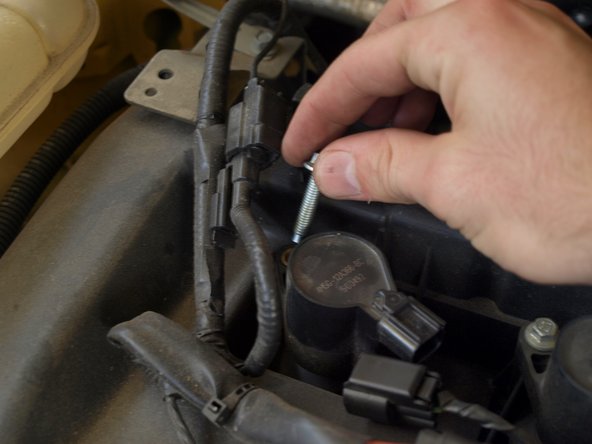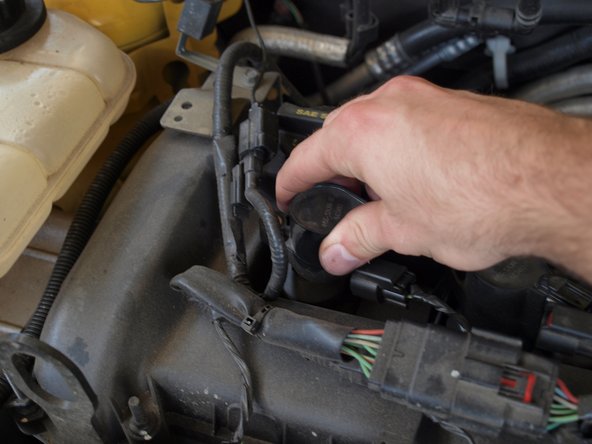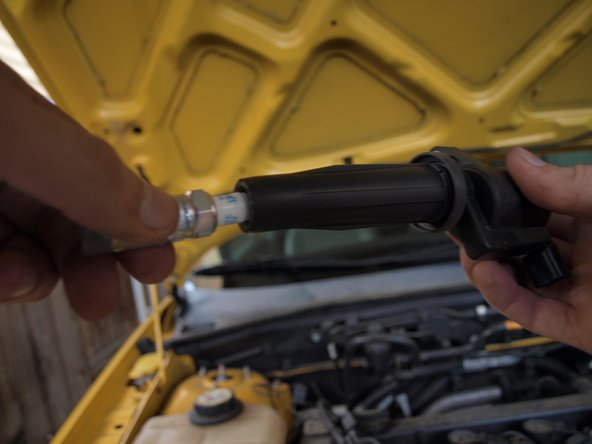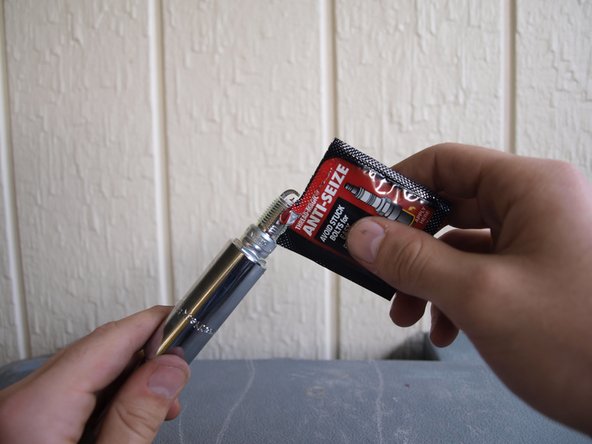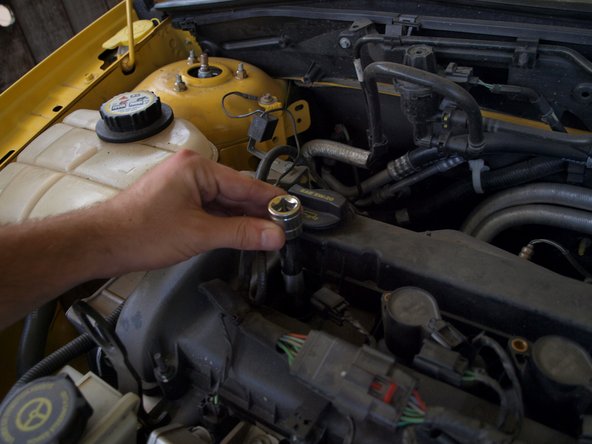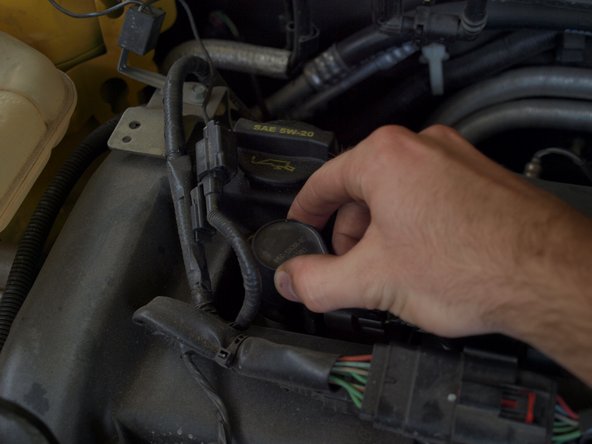Introduction
The following guide outlines the procedure for replacing the spark plugs in the 2.0 and 2.3 liter Duratec engines found in 2004-2007 Focus models. Replacement for OEM spark plugs is suggested every 60,000 miles.
For spark plugs that have an adjustable gap between the electrodes, the suggested gap is 0.050". OEM Motorcraft double platinum spark plugs, which are used in this guide, come pre-gapped and cannot be altered.
What you need
-
-
Use compressed air to clear any debris from the area around the ignition coils on top of the engine.
-
-
-
Remove the ignition coil electrical connector by first depressing the plastic tab on top of the connector.
-
Pull the connector straight away from the ignition coil to detach it.
-
Repeat this procedure for the remaining three ignition coils.
-
-
-
Use an 8 mm deep socket to loosen the four ignition coil mounting bolts.
-
Once the bolts are loose, they can be removed by hand.
-
-
-
-
Twist the ignition coil and spark plug boot while lifting it straight up to remove it from the engine.
-
-
-
Use a ratcheting socket wrench with an extender and a 5/8" spark plug socket to remove the existing spark plug from the cylinder head. Make sure that the spark plug is completely seated in the rubber end of the socket before loosening it.
-
-
-
Apply dielectric grease to the ribbed portion of the insulator.
-
Gently place the spark plug boot over the ribs and twist the two pieces back and forth to even out the layer of dielectric grease.
-
-
-
Place the new spark plug firmly in the spark plug socket so that the threaded end sticks out.
-
Apply an even layer of anti-seize compound to the threads of the spark plug.
-
-
-
Place the new spark plug into the cylinder head and tighten it by hand as much as you can.
-
Tighten the spark plugs to 11 ft-lbs with a torque wrench.
-
-
-
Place the ignition coil and dust boot back over the spark plug by pushing down and twisting it into place.
-
Reconnect the ignition coil electrical connector by snapping it back into place.
-






